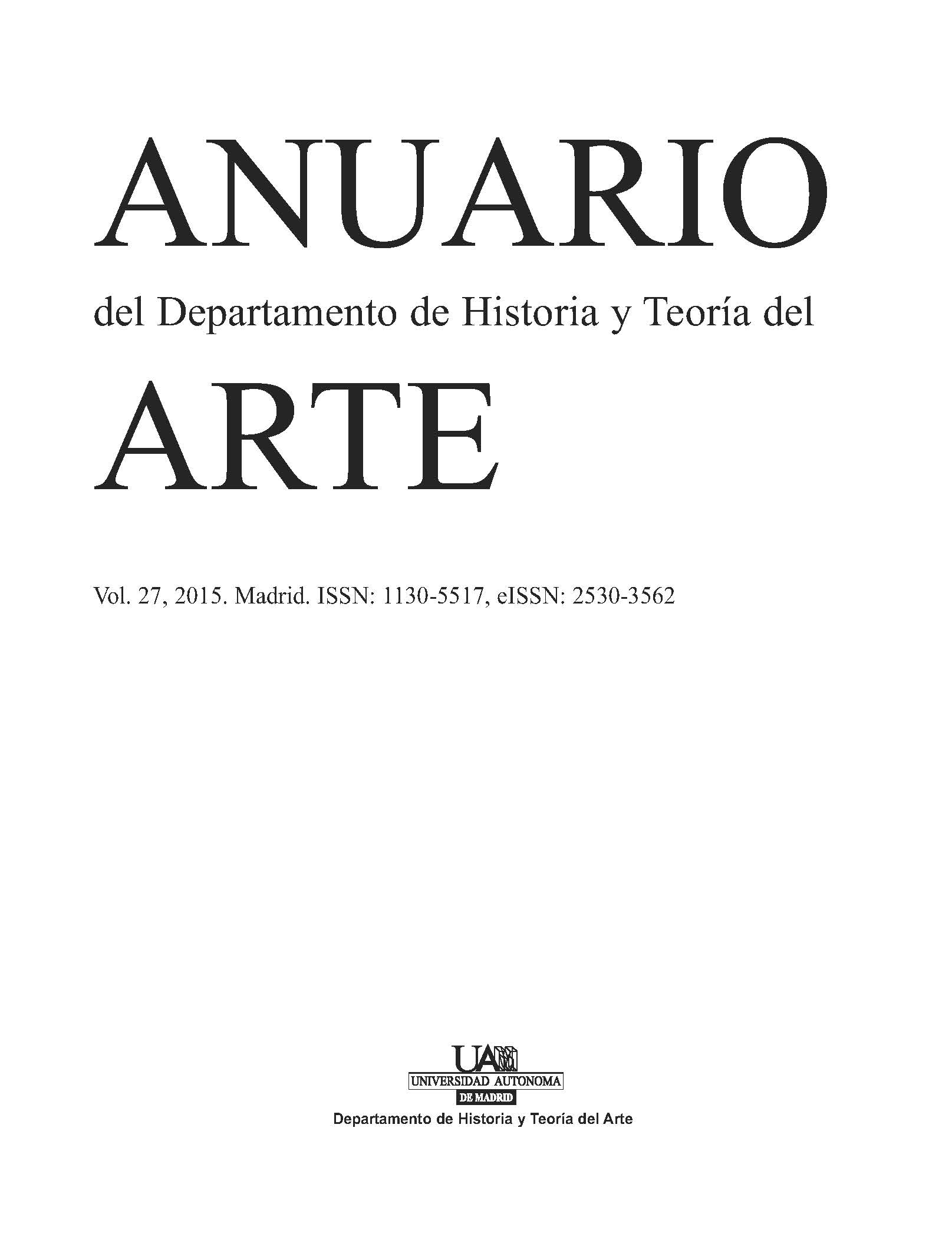Documentary Locus: Three Statements on Self-reference and Narrativity in Photography of Conflict Situations
Keywords:
Photojournalism, Documentary, Index, Iconography, Ideology, Narrative, Self-reference, StatementCopyright (c) 2017 Anuario del Departamento de Historia y Teoría del Arte

This work is licensed under a Creative Commons Attribution 4.0 International License.
Abstract
Press photography and historical documents that come from conflict scenarios have created a new iconography of horror during the twentieth century. These pictures integrate imagery based on compositions, gender and archetypes registered in the history of modern art, but supplement their semantics with an ideological contribution that comes from their status as records of events. Their definition, halfway between the iconographic and the ideological realm, constitutes an arena in which a dialogue between the subjective and the objective of the image is relocated. This paper presents three hypotheses about the characteristics of this subjective positioning revealed by images in their supposedly objective condition for both the photographer and the spectator.
Downloads
References
Roland BARTHES, Mitologías, Madrid, Siglo XXI, 2000.
Jean Louis BAUDRY y Allan WILLIAMS, “Ideological Effects of the Basic Cinematographic Apparatus”, en Film Quarterly, Vol. 28, No. 2 (invierno, 1974-1975), http://dx.doi.org/10.2307/1211632
Hans BELTING, Antropología de la imagen, Buenos Aires, Katz, 2007.
José Luis BREA, “Estudios Visuales. Nota del editor”, en Estudios Visuales. Ensayo, Teoría y Crítica de la Cultura Visual y el Arte Contemporáneo, n. 1, CENDEAC, Murcia, noviembre 2003.
Jordan CRANDALL (ed.): The Organization and Representation of Violence, Rotterdam, Witte de With. Centre of Contemporary Art, 2005.
Emmanuelle CHÉREL / Gilles SAUSSIER, “Retourner l’actualité, une lecture du Tableau de chasse”, en Gaëlle MOREL (dir.): Photojournalisme et Art contemporain. Les derniers tableaux, París, Éditions des Archives Contemporaines, 2008.
Régis DEBRAY, Vida y muerte de la imagen. Historia de la mirada en occidente, Barcelona, Paidós, 1994.
Philippe DUBOIS, El acto fotográfico. De la Representación a la Recepción, Barcelona, Paidós, 1999.
Georges DIDI-HUBERMAN, Cuando las imágenes toman posición. El ojo de la historia, 1, Madrid, Antonio Machado Libros, 2013.
Georges DIDI-HUBERMAN, Imágenes pese a todo. Memoria visual del Holocausto, Barcelona, Paidós, 2004.
Vilém FLUSSER, Una filosofía de la fotografía, Síntesis, Madrid, 2001.
Ángel GONZÁLEZ, Arte y terror, Mudito & co., 2008.
Lev MANOVICH, “An archeology of computer screen”, en NewMediaTopia, Moscú, Soros Center for the Contemporary Art, 1995.
Christian METZ, El significante imaginario: psicoanálisis y cine, Barcelona, Paidós, 2001.
Gaëlle MOREL: “Esthétique de l’auteur. Signes subjectifs ou retrait documentaire?”, en Études photographiques, n. 20, junio de 2007.
Jacques RANCIÈRE, El destino de las imágenes, Pontevedra, Politopías, 2011.
Scene of the Crime, UCLA / Hammer / The MIT Press, Cambridge, 1997.
Jean-Marie SCHAEFFER, La imagen precaria. Del dispositivo fotográfico, Cátedra, Madrid, 1990.
Gilles SAUSSIER, “Situations du reportage, actualité d’une alternative documentaire”, Communications, “Le Parti pris du document”, nº 71, 2001, http://dx.doi.org/10.3406/comm.2001.2090
Susan SONTAG, Ante el dolor de los demás, Barcelona, Alfaguara, 2003.
Susan SONTAG, Sobre la fotografía, Barcelona, Alfaguara, 2005.
Kaja SILVERMAN, El umbral del mundo visible, Madrid, Akal, 2009.
Jeff WALL, Ensayos y entrevistas, Salamanca, Centro de Arte de Salamanca, 2003.
Marc WIESE, Shoot it!. The Story of the legendary Bang Bang Club, WDR & ARTE, 2013.
